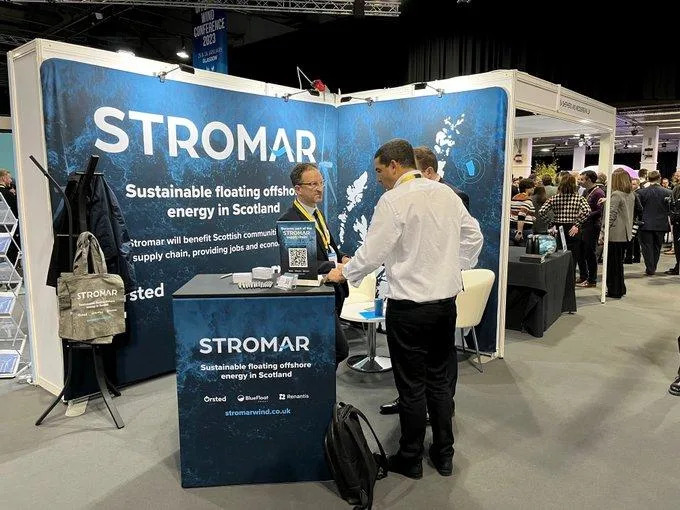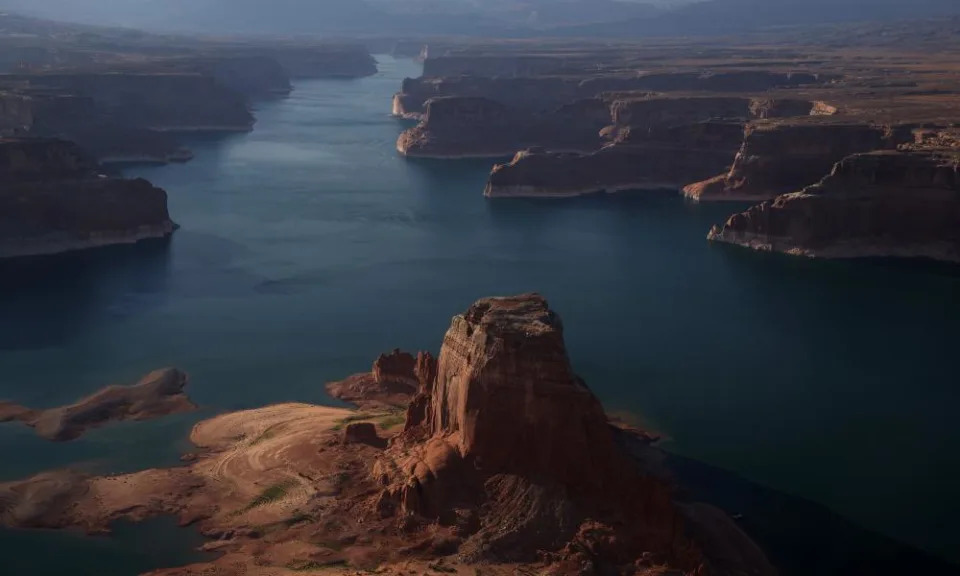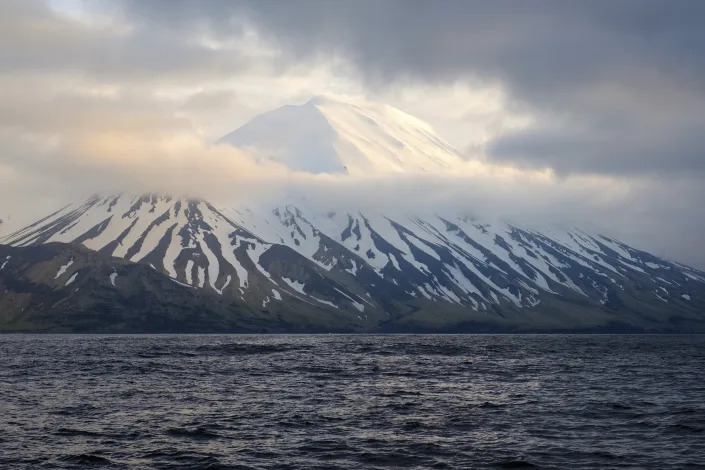Community contributor
Thu, 9 March 2023

Ørsted's Hornsea Two off the Yorkshire Coast is the largest offshore wind farm in the world and produces enough energy to power well over one million homes – with the company now keen to expand its engagement in Scotland’s green energy transition (Image: Orsted)
With a proven track record of delivering offshore energy across Europe, Ørsted is now powering ahead with Stromar, a giant floating windfarm located off the north-east coast of Scotland
For offshore wind developers, the holy grail is delivery. The ability to deliver megawatts and gigawatts of clean, low-cost, secure, renewable energy out of demanding, unforgiving, inhospitable environments – like the North Sea.
And those are just the conditions on water. Never mind the challenges on land – from pandemics and global conflicts to the energy crisis and inflation.
Developing offshore wind projects is not for the faint of heart. Ørsted, the world’s leading offshore wind developer, knows the challenges. But the company also knows how to deliver.
It has developed and built more offshore wind projects than any other company in the world with 8.9GW of capacity installed across three continents by the end of 2022.
That’s enough green energy to power approximately nine million UK homes.
And it is generating more than renewable energy, Ørsted is powering green economic growth, revitalising local communities, and making a net-positive contribution to biodiversity.
Ørsted’s vision is a world that runs on green energy – and the company knows there is so much more that needs to be done – especially in Scotland where the ScotWind leasing round aims to deliver up to 28GW of capacity through 20 offshore sites.
ONE OF THE WORLD’S MOST SUSTAINABLE ENERGY COMPANIES
ØRSTED is particularly proud of where it stands today because of the remarkable transformation it has gone through – from one of the most coal-intensive energy companies in Europe to being ranked one of the world’s most sustainable energy companies.
The company used to be a fossil fuel giant called Danish Oil & Natural Gas (DONG) and was formed in 2006 out of a merger between Denmark’s state-owned oil and natural gas company and five Danish energy companies.
But Ørsted realised that its business model was no longer sustainable from both a financial and an environmental perspective.
In 2009, 85% of Ørsted’s energy production was based on fossil fuels and only 15% on renewables. It committed to switching that ratio to 85% renewable energy and only 15% fossil fuels by 2040. Many thought Ørsted was overly ambitious and said it couldn’t be done.
But the company was determined to focus on offshore wind, bring down its production costs and decisively move away from fossil fuels.
It achieved its goal by 2019 – within a decade of setting it and 21 years ahead of schedule. Today, Ørsted has developed around a third of the global capacity of offshore wind installed, excluding mainland China.

HeraldScotland:
Above, Ørsted employees were in Glasgow last month promoting the ambitious Stromar project at the Offshore Wind Conference 2023 which was held in the city
POWERING LOCAL ECONOMIC GROWTH
WHILE the UK has established itself as a global leader in offshore wind as it strives to reach its net zero goals, Ørsted is the biggest developer in the market, with 13 offshore wind farms and 6.2GW installed capacity delivering approximately 7% of the UK’s electricity.
Just last year, it commissioned Hornsea 2, the largest operational offshore wind farm in the world, about 90 kilometres off the Yorkshire coast. With a total capacity of 1.3GW of clean energy, that’s enough to power over 1.4 million UK homes with clean, renewable electricity.
Ørsted projects are delivering more than green energy, they are transforming coastal communities through investment in local infrastructure, the creation of high-skilled jobs and the development of a robust, export-oriented local supply chain.
This is what it now aims to help deliver in Scotland.
Building the world’s largest wind farm required the skills and ingenuity of thousands of individuals and hundreds of companies across the Humber region. Over the course of the last decade Ørsted directly invested or enabled the investment of over £9.5 billion in the Humber region alone.
It also directly invests millions into the communities it works in by supporting Science, Technology, Engineering and Maths (STEM) educational initiatives and through community benefit funds that support local social and environmental programs.
WORKING IN BALANCE WITH NATURE
WHILE Ørsted delivers on the green energy transformation – it is committed to doing it right – in balance with nature and people.
The company has set a goal for itself that all new renewable energy projects it commissions from 2030 at the latest should deliver a net-positive biodiversity impact.
It is already actively working to avoid and minimise the potential impact of its activities on the marine environment.
For example, the company is restoring biodiversity around the UK’s Humber Estuary by planting seagrass, rejuvenating saltmarsh and creating a biogenic reef using native oysters.
It has also made a long-term commitment to tackle marine waste with the help of the UK fishing industry called “Fishing for Litter.” And globally, Ørsted has partnered with WWF, the world leader in nature conservation, to drive a global shift towards addressing climate and biodiversity goals together.
AT THE FOREFRONT OF FLOATING WIND TECHNOLOGY
WITH 30 years of experience in offshore wind comes a sense of confidence and Ørsted is undaunted by uncertainty.
As industry leaders, they know they need to constantly innovate to make progress. That’s why Ørsted is so eager to jump into the next frontier for the industry: floating offshore wind.
Given its rich history pioneering the offshore oil and gas industry, it’s fitting that Scotland is at the epicentre of this exciting new technology. Ørsted’s most ambitious floating offshore wind project is Stromar, a 1GW project off the north-east coast of Scotland created with the company’s partners, Renantis and Blue Float Energy.
Given its collective expertise, Ørsted is confident it will deliver this large-scale project and help Scotland become a hub of global expertise for this emerging renewable energy solution.
The company is also working on Salamander, a 100MW floating offshore wind project that is part of a joint venture with Simply Blue Group and Subsea 7. Designed as a stepping-stone for floating wind technology developers, supply chains and stakeholders, the project is supporting the cost reduction and learning journey needed for the commercial deployment of floating offshore wind.
At its core, the project has been designed specifically to help the Scottish supply chain prepare for commercial scale build out coming through ScotWind.
Ørsted is eager to expand its engagement in Scotland’s green energy transition beyond these floating projects and it’s onshore wind farm Kennoxhead – because they believe on the path to net zero, we’re all just getting started.
orsted.co.uk











